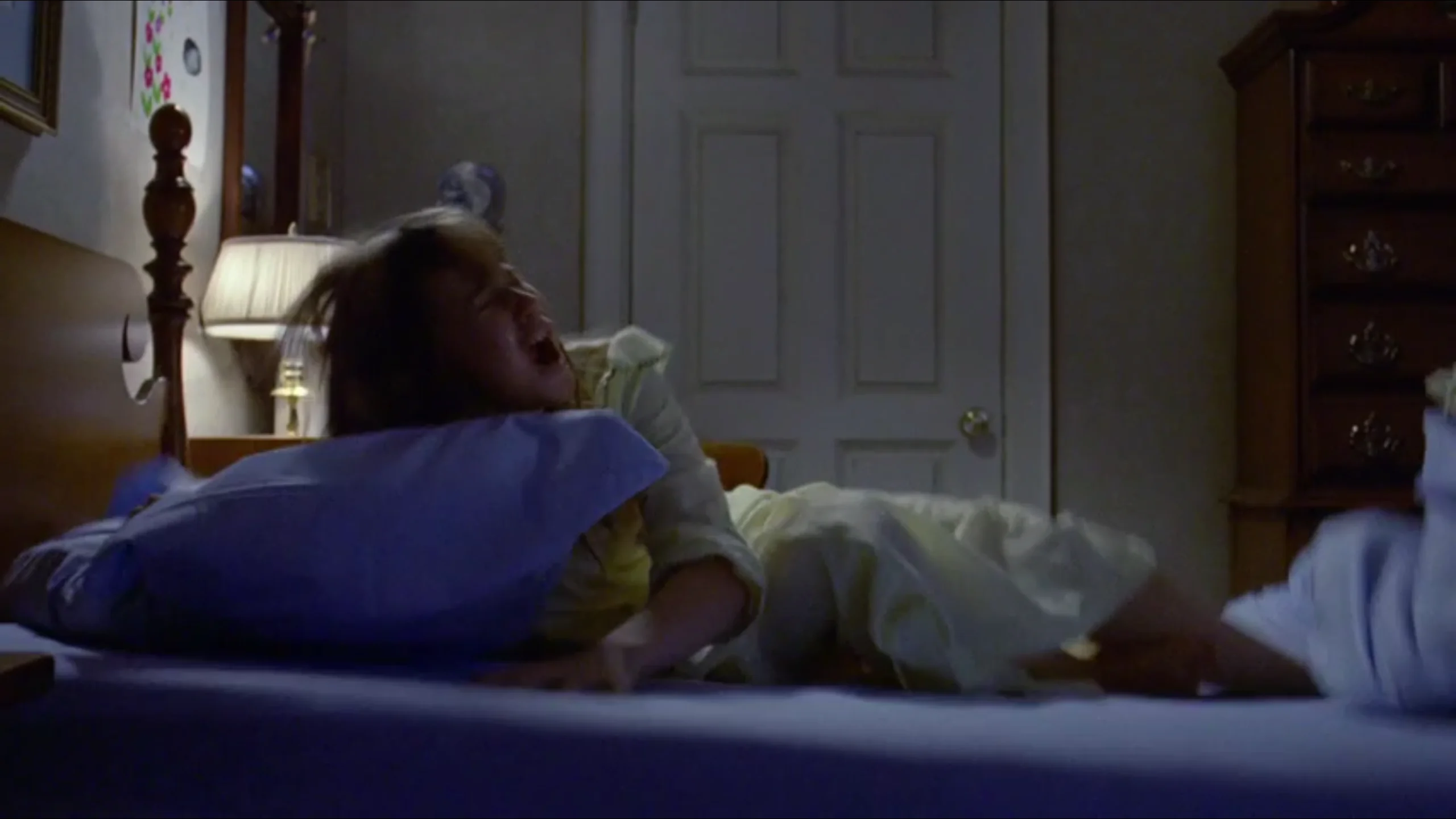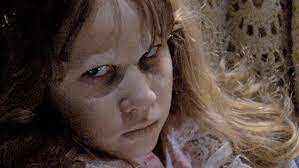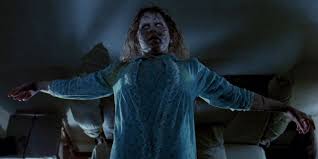The Exorcist (1973)

The Exorcist (1973) Review – A Chilling Masterpiece of Horror
The Exorcist (1973), directed by William Friedkin and based on William Peter Blatty’s novel, is often regarded as one of the most terrifying and iconic horror films of all time. With its haunting atmosphere, unsettling performances, and a chilling exploration of good versus evil, The Exorcist has left a lasting impact on the genre and continues to evoke fear and awe decades after its release. This review will explore the film’s plot, performances, themes, cinematography, and its cultural impact.
Plot Summary
The story of The Exorcist begins when young Regan MacNeil (Linda Blair), the daughter of famous actress Chris MacNeil (Ellen Burstyn), begins exhibiting strange and violent behavior while living in a secluded house in Georgetown. Initially, Chris believes Regan’s behavior is due to a medical condition, but as the girl’s condition worsens, she seeks the help of Father Karras (Jason Miller), a Jesuit priest who is struggling with his own faith.
Father Karras is initially skeptical of the supernatural explanation for Regan’s condition, but after witnessing her terrifying transformation, he becomes convinced that she is possessed by a demon. Karras enlists the help of Father Merrin (Max von Sydow), an experienced exorcist, to perform a harrowing exorcism to rid Regan of the evil that has taken hold of her.
As the exorcism progresses, the battle between good and evil becomes a fight for survival, as Father Merrin and Father Karras struggle to save Regan’s soul, confronting terrifying supernatural forces in the process.
Themes and Symbolism
Good vs. Evil
At its core, The Exorcist is a battle between the forces of good and evil. The possession of Regan represents the ultimate triumph of evil, and the exorcism is a desperate attempt by Father Merrin and Father Karras to reclaim her soul. The film explores the nature of evil in all its forms and the lengths to which individuals will go to protect the innocent.
Faith and Doubt
Father Karras’s personal struggle with faith is a key theme in the film. His internal conflict between his skepticism and his duty as a priest mirrors the larger conflict between belief and doubt that runs throughout the story. As the exorcism unfolds, Karras’s journey from doubt to faith becomes a crucial part of his character’s arc.
The Loss of Innocence
The horrifying transformation of Regan from a sweet, innocent child into a violent, demonic force symbolizes the loss of innocence and the fragility of human nature. The film presents a world in which evil is a real, pervasive force, capable of infiltrating even the most innocent and pure individuals.
Performances
Linda Blair as Regan MacNeil
Linda Blair’s portrayal of Regan is legendary, with her performance remaining one of the most iconic in horror cinema. As the possessed child, Blair perfectly conveys the terror and malevolence of the demon while maintaining the vulnerability of the innocent child trapped inside. Her transformation, both physically and emotionally, is one of the most unsettling aspects of the film.
Ellen Burstyn as Chris MacNeil
Ellen Burstyn delivers a powerful performance as Chris MacNeil, a mother desperate to save her daughter. Her portrayal of a woman torn between medical explanations and the supernatural horror unfolding before her eyes is both emotional and believable. Burstyn’s performance anchors the film’s emotional depth, making the horror even more impactful.
Jason Miller as Father Karras
Jason Miller’s portrayal of Father Karras, the conflicted priest, is deeply moving. Karras’s internal struggle with his faith adds a layer of complexity to the film, as his personal journey is intertwined with Regan’s exorcism. Miller’s performance highlights the human vulnerability behind the heroic act of confronting evil.
Max von Sydow as Father Merrin
Max von Sydow’s performance as Father Merrin, the experienced exorcist, adds gravitas and authority to the film. His calm and composed demeanor contrasts with the frantic energy of Father Karras, and his portrayal of a man facing the evil of the world without fear or hesitation is both powerful and chilling.
Cinematography and Visual Style
The cinematography of The Exorcist, by Owen Roizman, is atmospheric and unnerving, using shadows, lighting, and framing to create a sense of dread. The film often uses close-ups and extreme angles to heighten the tension, focusing on the characters’ emotional states and the terrifying transformations of Regan. The steady, deliberate pacing builds a sense of impending doom that culminates in the exorcism’s terrifying final act.
The iconic scenes, such as Regan’s head turning 360 degrees and her violent outbursts, are filmed in a way that is both disturbing and believable, making the supernatural events feel grounded in a real, tangible world.
Music and Sound Design
The film’s score, composed by Jack Nitzsche and featuring the famous theme by Mike Oldfield, is eerie and haunting, perfectly complementing the film’s atmosphere of dread. The music is sparse, allowing the sounds of Regan’s possession to take center stage, which adds to the film’s unsettling ambiance. The combination of eerie music and disturbing sound effects creates a sense of unease that lingers long after the film ends.
Cultural Impact and Reception
The Exorcist was met with critical acclaim upon its release and quickly became one of the most influential horror films in history. Its graphic portrayal of possession, the supernatural, and its exploration of faith and evil challenged audiences in ways that few films had before. It was the first horror film to be nominated for an Academy Award for Best Picture, cementing its place in cinematic history.
The film’s impact on popular culture is profound, with its scenes, quotes, and imagery becoming iconic in the genre. It has inspired countless imitators and parodies but remains unmatched in its ability to evoke fear and provoke thought. The Exorcist continues to be studied for its artistic and thematic depth, making it a landmark film in the history of cinema.
Final Verdict
The Exorcist (1973) is a chilling, thought-provoking masterpiece that transcends the horror genre. With unforgettable performances, expertly crafted cinematography, and a haunting soundtrack, the film continues to captivate and terrify audiences decades after its release. Its exploration of good versus evil, faith, and the nature of evil makes it a timeless classic that remains a must-watch for fans of horror and cinema.
For those who appreciate horror films that delve into deep philosophical themes and deliver a truly terrifying experience, The Exorcist is an essential film that remains unmatched in its ability to disturb and provoke.











